DULUTH — While Desert Southwest tourists get their kicks on Route 66, Northland travelers have been taking it down Minnesota Highway 61 for nearly a century. Before that, the North Shore route had names including Minnesota Highway 1 and the Lake Superior International Highway.
Arnold R. Alanen is the author of a new history of the North Shore, from Duluth to Grand Portage — and everything along the way. "The Scenic Route: Building Minnesota's North Shore" is available now from the University of Minnesota Press, and Alanen is making to present the book.
ADVERTISEMENT
From his home in Madison, Wisconsin, Alanen spoke with me about some of the revelations that may surprise even North Shore know-it-alls.
Chester Congdon did much more for North Shore than build Glensheen
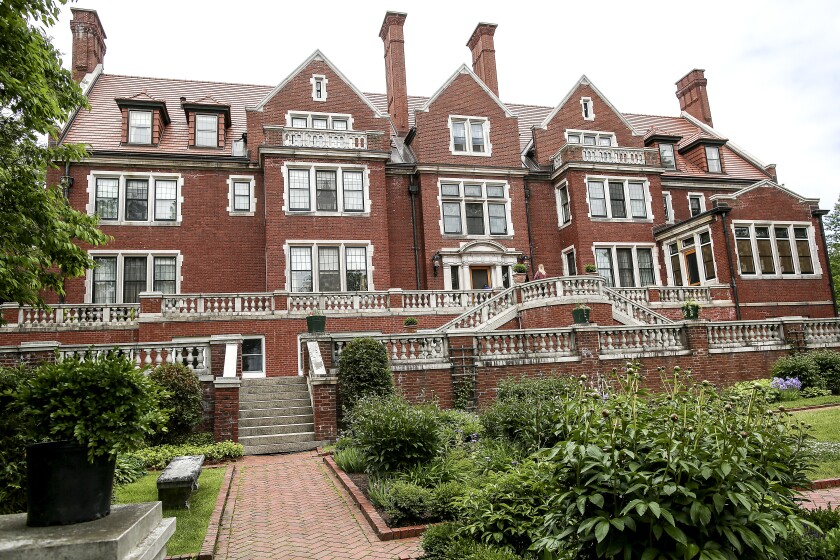
Duluth's historic mansion is a highlight of the city's lake shore, but Chester Congdon, who built Glensheen for his family, thought even bigger. "He was one of the original sponsors," said Alanen, "of the so-called Lake Superior International Highway."
A 1910 diagram appearing in the book depicts architects' plan for a landscaped boulevard providing separate lanes for cars, carriages, horseback riders and pedestrians. Congdon favored that plan and donated much of the land that became today's Congdon Boulevard — which is attractive, if not quite as elaborately landscaped as once imagined.
New Scenic Cafe used to have 'American Graffiti' vibe
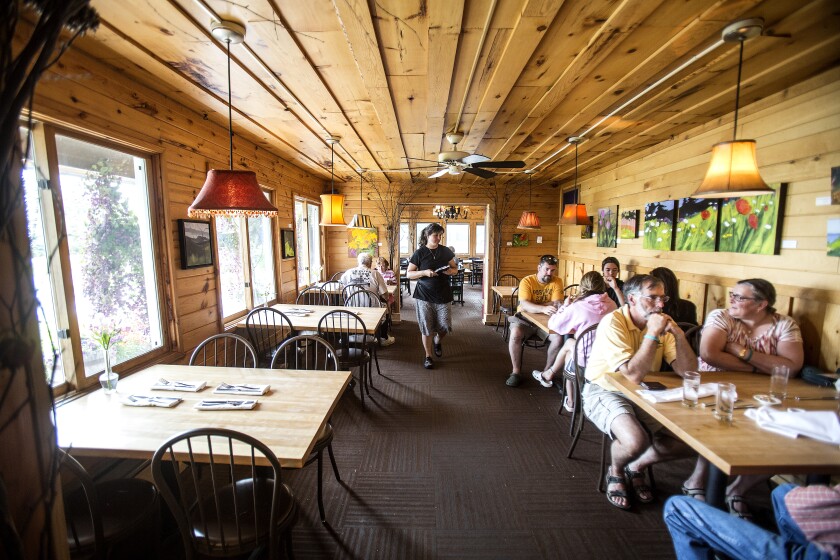
If you were a teenager in 1950s Duluth and you wanted to take advantage of your night out with the family car, where would you go? You might well cruise up the shore to Johnson's Drive-In, which offered the classic complement of mid-century hot-rod attractions: burgers, carhops, jukebox. "It was a famous and most favored teenage hangout," said Alanen.
A succession of ownership changes starting in 1972 saw the business move away from a teenage clientele in favor of North Shore tourists. The biggest changes, though, have come in the 21st century as chef/owner Scott Graden has turned the restaurant now known as the New Scenic Cafe into one of the region's top foodie destinations.
Tom's Logging Camp remnant of roadside America
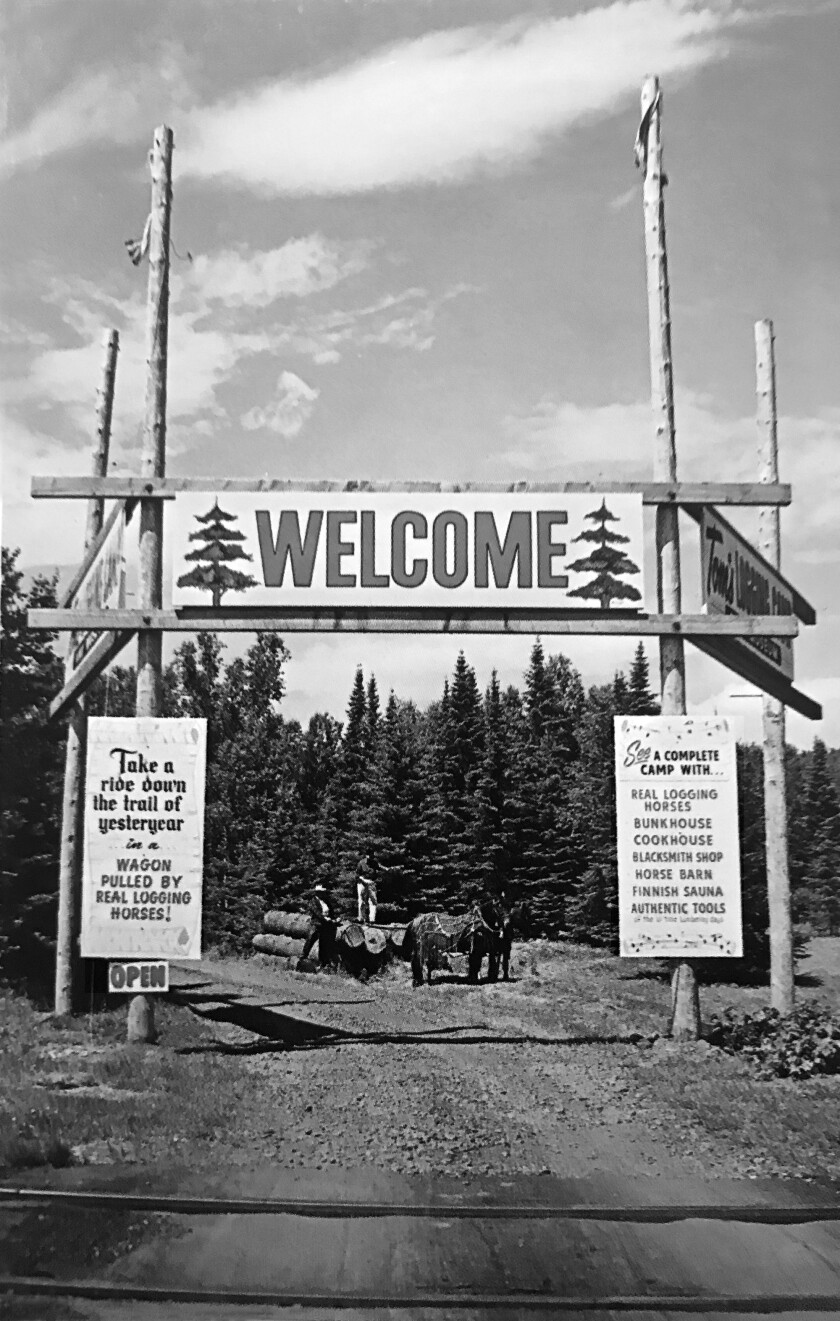
While the former Johnson's Drive-In has been dramatically transformed, Tom's Logging Camp remains an example of the kind of splashy tourist attraction that used to be more common along Highway 61. Owners Lauren and Steve Weckman don't just teach visitors about the region's logging heyday, but aim to maintain the retro feel the attraction has had for decades.
Some of the changes elsewhere along the North Shore are due to developments in technology. Gone are the days of coin-operated telescope viewers. Other changes are due to bygone practices that few, least of all the local fauna, would want to revive.
ADVERTISEMENT
"The North Shore had at least two places where they would have bears chained to a post," noted Alanen, "and daring but, maybe, foolhardy tourists would then buy some marshmallows and bring them along and feed the bruins."
Russ Kendall's used to do a lot more than sell fish
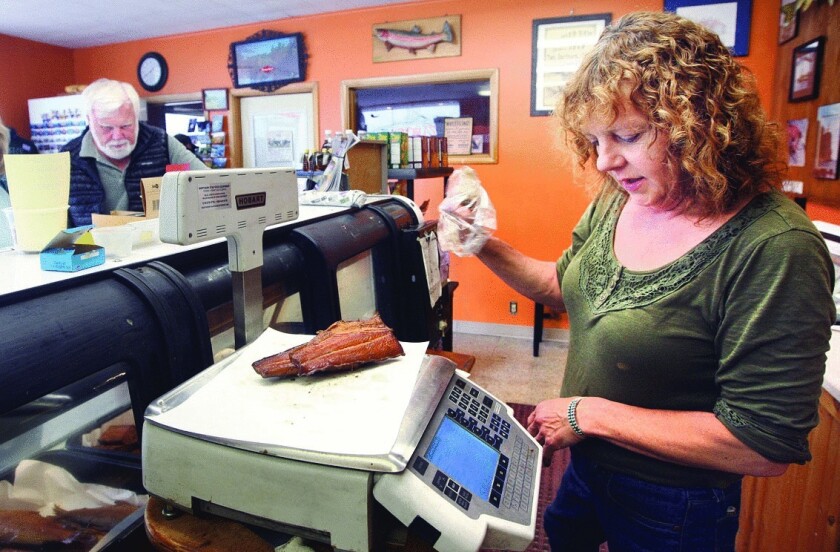
Russ Kendall's Smoke House dates back over a century, and is still famed for tasty fish. Back in its early decades, though, the business offered a range of boat charters as well as boasting a tavern and dance hall. In the 1950s, you could even go to Kendall's to watch live "grapplers," competitors akin to pro wrestlers.
The grapplers would go at it in a tiny bar. "It must have really been tight and hot, even for the North Shore, to have those sweaty guys fighting in there," mused Alanen.
Pierre the Voyageur spoke
Pierre the Voyageur is the 20-foot stalwart who stands alongside Highway 61 in Two Harbors. Also known as "Pierre the Pantsless Voyageur" due to having a much heavier clothing layer up top than down below, the statue was built in 1960 to promote the Voyageur Motel and was moved to its current home in 2011.
The voyageur is now immobile, but that wasn't always the case. Originally, Pierre's head moved — and he even spoke. "The big man talked via speaker and a worker hidden in a booth," the Lake County News-Chronicle in 2010. Pierre's gaze became fixed in about 1980, when the motor that rotated his head wore out.
Like Elton John, though, the voyageur is still standing. "When came in and blew off its paddle and one arm, they made repairs," said Alanen. "Pierre is there still to greet motorists when they travel along the expressway."
Two Harbors Lighthouse oldest still functioning in Minnesota
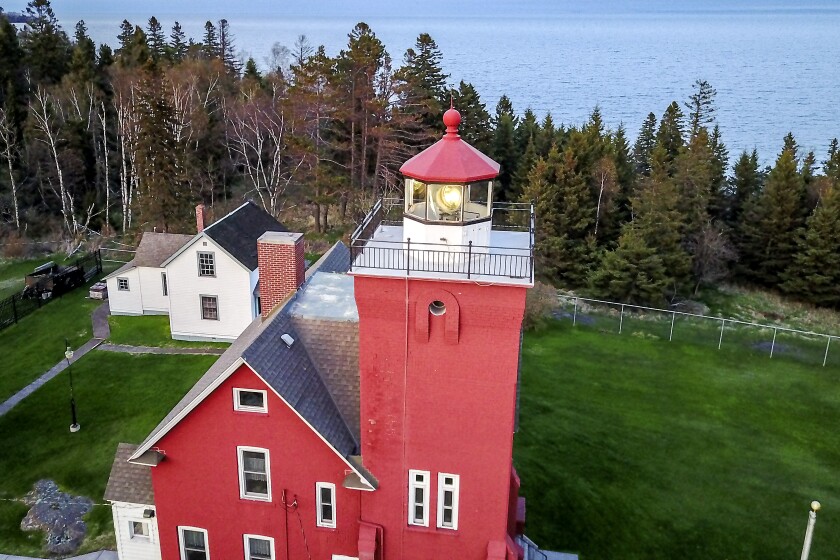
Having never been to the Two Harbors shoreline at night, I didn't even realize the Lighthouse Bed & Breakfast remains a "They don't need a lightkeeper anymore because everything is so automated," explained Alanen.
ADVERTISEMENT
The light station has been active since 1892 — almost two decades before Split Rock Lighthouse became operational. It was electrified in 1921 and automated in 1981. Since 2001, the Lake County Historical Society has operated the light as a "private aid to navigation," according to the
Silver Creek cliff used to be deadman's curve
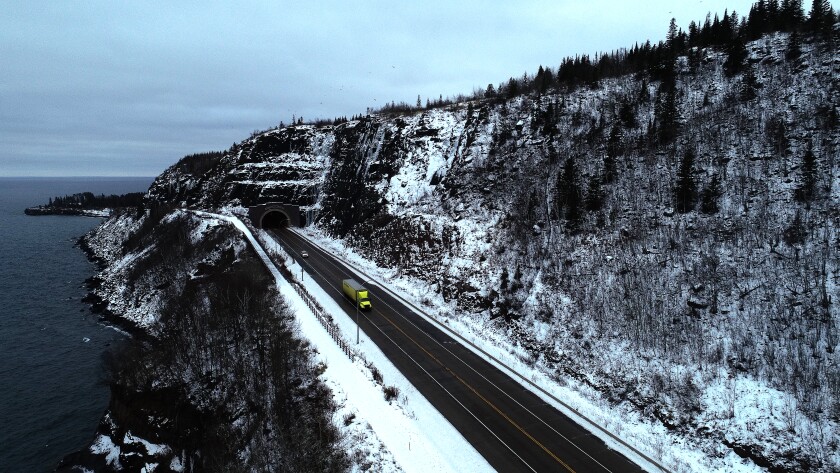
The Silver Creek Cliff Tunnel was completed in 1994 to promise safe passage along what was once a seriously sketchy stretch of highway.
In the 1920s, some 60,000 tons of rock were dynamited to create a cliffside stretch of Minnesota Highway 1, which sported on its Lake Superior side a 125-foot drop that was so sheer, it was said you could toss a cigarette butt right into the water from your passing car.
"Now," said Alanen, "people go by and they don't even realize what a challenge it used to be to drive there, especially on snowy nights or when it was very dark and foggy." Incidents on the road included a fatal crash in 1957, when a car broke through the guardrail and landed in the lake.
Now, the Gitchi-Gami State Trail allows hikers to follow the former highway right of way — at a much slower speed.
Silver Bay has taconite baptismal font
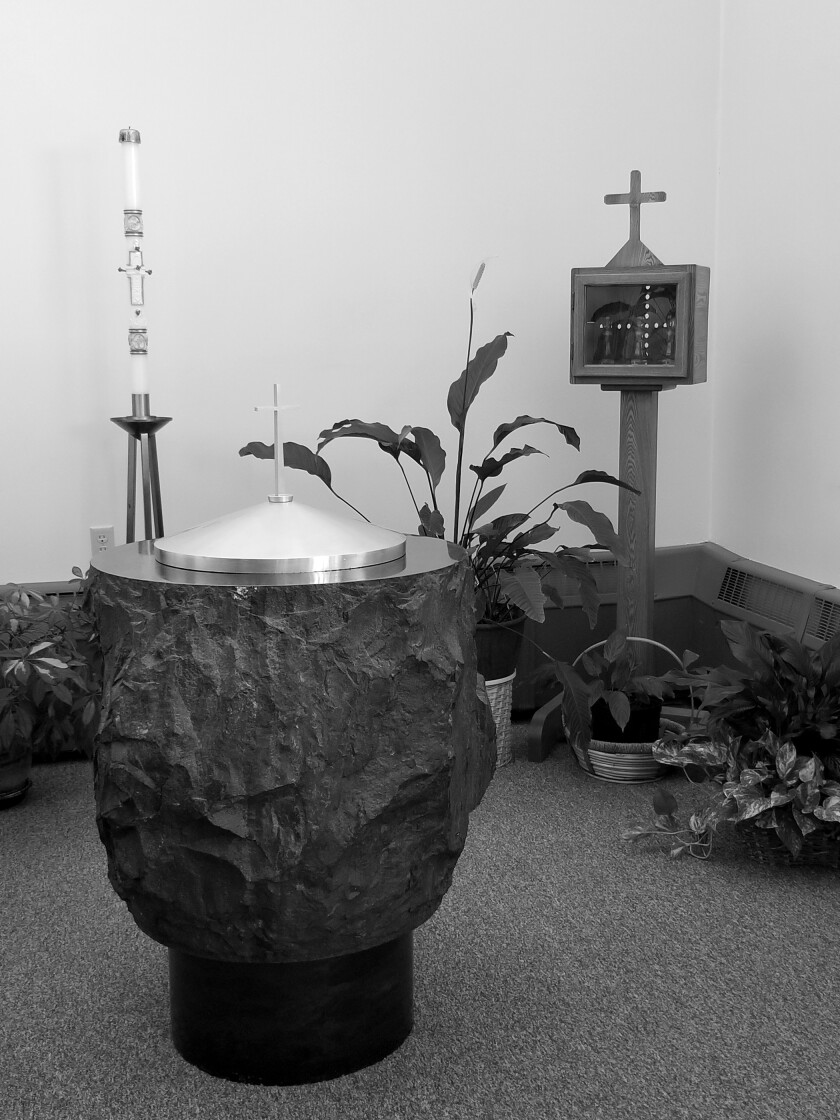
There is no more hardcore way for a Northland Catholic baby to enter the community of believers than to be baptized at a font made of taconite. At St. Mary's Catholic Church in Silver Bay, 5 tons of Babbitt ore were turned into a church altar and baptismal font in 1958. "That is really quite a fascinating feature," said Alanen.
Space-age Tofte roof approved by undergrad
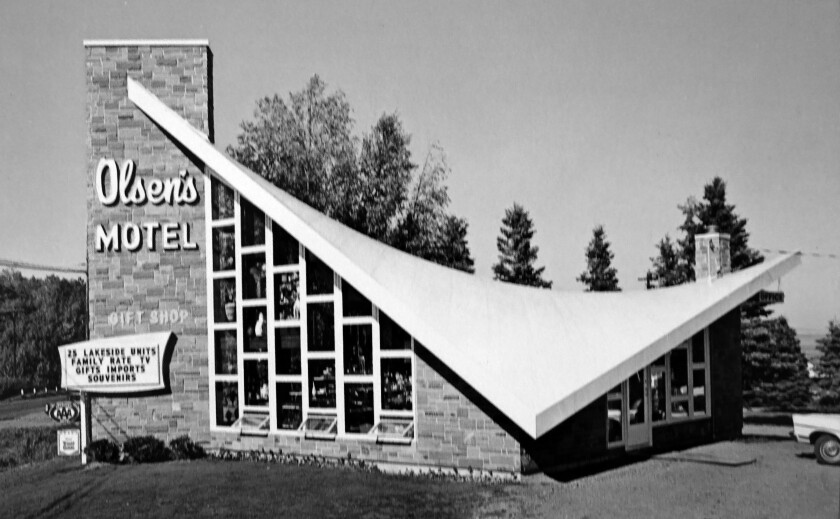
Maureen Olson was a University of Minnesota Duluth math major in the early 1960s when her dad and uncle decided to build a motel office in the Googie style that was then trendy. Contractors Kenneth (Maureen's father) and Dale Olson had previously built the hyperbolic paraboloid roof for Zoar Lutheran Church, and decided to put their skills to the test by building another parabolic roof.
ADVERTISEMENT
"They certainly had to work with the architect on the church, but built this one very much on their own," explained Alanen. Asked to review and approve the design, Maureen signed off — and obviously knew her stuff. The Tofte building is still standing to this day, home to Superior Massage Therapists.
"It's a tribute to her, too," said Alanen.









